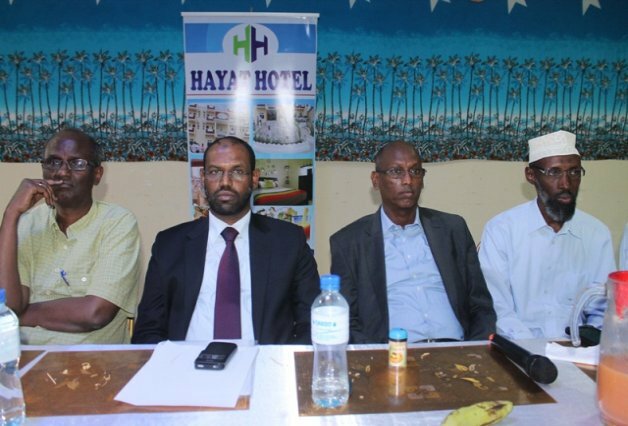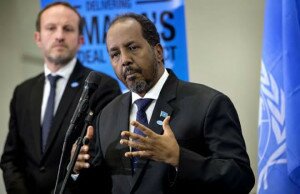Somalia’s Wars Swell a Refugee Camp in Kenya
 DADAAB, Kenya — When Abdullahi Salat came here as a young boy in 1991, fleeing civil war in his homeland, Somalia, little more than shrubs and a few tents dotted the landscape. The woman working for the United Nations who greeted him at this safe haven, then nearly empty, showed him to his own tent and sprinkled a handful of seeds into his palm.
DADAAB, Kenya — When Abdullahi Salat came here as a young boy in 1991, fleeing civil war in his homeland, Somalia, little more than shrubs and a few tents dotted the landscape. The woman working for the United Nations who greeted him at this safe haven, then nearly empty, showed him to his own tent and sprinkled a handful of seeds into his palm.
“ ‘Plant them,’ ” Mr. Salat, now 29, remembered the aid worker telling him. “ ‘It’s hot here.’ ”
He told her no that day; Dadaab was not his home, and he believed that he would be moving on shortly.
“Now the trees are very huge,” he said.
Over the years since Mr. Salat arrived here — an arid patch of Kenya roughly 50 miles from the Somali border — the refugee population at Dadaab has swelled to nearly 300,000, virtually all Somali, making it the largest refugee complex in the world, United Nations officials here say, and one of Kenya’s largest cities, dusty and spread out.
Next year, Dadaab will celebrate its 20th birthday. But as Somalia’s conflicts rage on, Kenyan attitudes toward them have grown icy, and this collection of refugee camps has become a nettlesome political problem and, some contend, a source of insecurity itself.
Intense fighting in Somalia in recent months has sent new floods of refugees across the border, which Kenya officially closed in 2007. Last week, the United Nations accused Kenyan soldiers of forcing thousands of Somalis who had fled to Kenya back across the border.
 In Dadaab itself, a stalemate over what to do with the growing refugee population has led to a critical shortage of schools, health centers and water stations and has raised fears that the refugees are being recruited by the warring parties of the very conflict they fled.
In Dadaab itself, a stalemate over what to do with the growing refugee population has led to a critical shortage of schools, health centers and water stations and has raised fears that the refugees are being recruited by the warring parties of the very conflict they fled.
The situation has caught the attention of the United Nations, which recently sent a special envoy on children and armed conflict, Radhika Coomaraswamy, to Somalia and Kenya.
The use of child soldiers has become a major aspect of Somalia’s seemingly inextricable conflict, and the country’s transitional government, which is supported by the United States, has a history of using children in combat.
So do the Shabab, the fearsome insurgents who control much of Somalia. And so do Somalia’s notorious piracy networks.
“It has become widespread; children are commodities,” Ms. Coomaraswamy said. “They are fascinated by notions of heroic death and the mythology of war.”
In Dadaab, where there are more than 100,000 school-age children, military recruitment is nothing new.
“Nobody wants to go back,” said Mohamed Ahmed, a 20-year-old here, but “sometimes they steal people,” referring to the Shabab and others.
In 2009, the Kenyan government was accused of supporting recruitment drives among refugees from the camps to fight in Somalia’s army.
Kenyan officials and Somali expatriates “came to the marketplaces, during the middle of the day,” Mr. Salat said. “It was very official.”
Human Rights Watch documented the recruitment, in which it said young men and boys were lured with false promises of “exorbitant pay” and claims of United Nations support for the effort. The report said the Shabab also tried to recruit among Somali refugees.
Still, few of the refugees here return to Somalia, United Nations officials say, and the complex’s infrastructure seems to attest to that. Dadaab is replete with grocery stores, cinemas, hotels and international bus offices. Mr. Salat, who was given seeds to plant as a boy, is now a husband and father, and he is still here, working for the camps and assisting the next generation of arrivals.
One statistic may be most telling: The United Nations says Dadaab has 6,000 third-generation refugees, grandchildren of the original arrivals.
But Dadaab is also a settlement cut off from the national grid. The complex relies on a series of boreholes for its water, and most of its residents lack transit papers to travel into the rest of Kenya.
“There is a tendency to see refugee camps as warehouses for storing unused people; we need to treat them as normal people,” said Richard Acland, a senior coordinator for the United Nations in Dadaab. “There are children living here whose parents have never seen Somalia. Can we really say these people are foreigners?”
Indeed, Dadaab poses a critical question for the international community: How does it treat a humanitarian emergency that does not go away?
The United Nations wants to expand the camps, but Somalia’s perpetual violence has taken a toll on Kenya’s hospitality and the government has relocated refugees from Dadaab in the past.
“The international community does not know how to deal with the refugee camps,” said Catherine Fitzgibbon of Save the Children. “Is it an emergency or is it permanent?”
The question has created a political Catch-22. Humanitarian officials say building schools and hospitals is the best way to protect refugees, but donors are hesitant to finance projects that will encourage more refugees to come and stay, Ms. Fitzgibbon said.
The impasse has left Dadaab understaffed and overcrowded. Half of its youth — who make up more than half of all refugees — are out of school and easy targets for militia recruiters.
Today, recruitment is propelled by cellphones and travel agencies. “It’s a problem, but it’s not new,” said a driver for the United Nations in Dadaab, who spoke on the condition of anonymity to protect his job.
He said Shabab recruiters posed as refugees on buses and also called residents on their cellphones. United Nations employees have been approached to serve as go-betweens by Shabab agents, he said. “They will recruit as long as they control the border,” he said.
United Nations officials say they are aware of the problem but do not know how, or how many, people are recruited.
Each day more children arrive. Outside Dadaab’s administrative offices, a row of women cradle babies in their arms, hiding from the sun under the shade of a tree. Deqo Noor, 25, a mother of three, said that neither she nor her husband had any work here. She was waiting to register her 2-month-old son so that he could receive food rations.
“I grew up here, I married here, I became a mother here,” Mrs. Noor said. “In Somalia, all I’ve been hearing about is war.”
___
New York Times
Comments
comments
 Calendar
Calendar






































